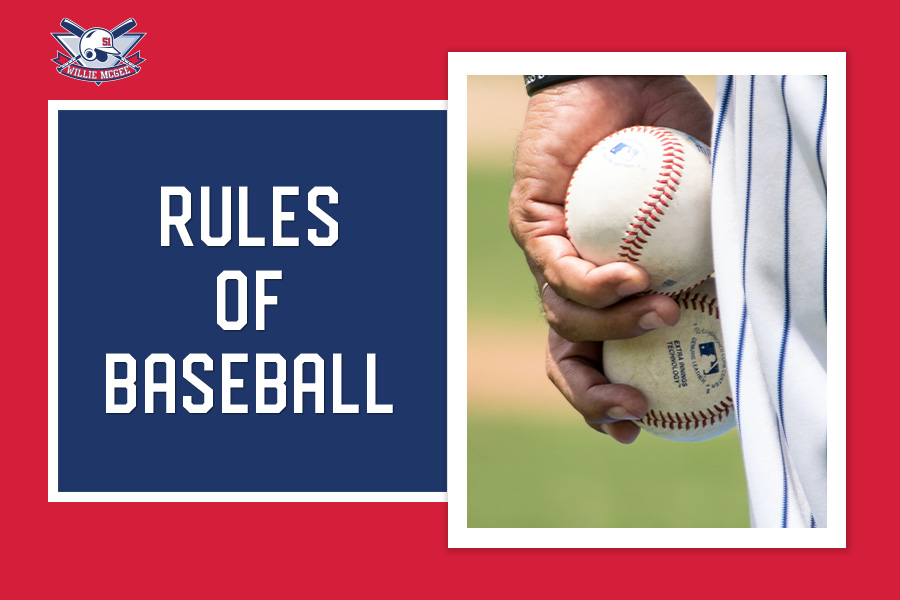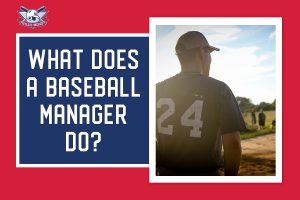Baseball, a game with a rich history, has captured the hearts of millions of enthusiasts worldwide for over a century. Dating back to 1744, the sport has a lasting allure and is ingrained in the culture of the nations, especially the US. To enjoy this sport fully, it is necessary to have a good understanding of the rules of baseball.
This sport involves strategy, skill, and teamwork and is characterized by its intricacy. As a player with years of experience on the baseball diamond, I decided to provide an extensive guideline covering the rules governing this sport.
Basics of Baseball
Baseball is a sport played in two teams, each with nine players. The objective of this sport is simple, to score more runs than the opposing team. A player earns a run when they successfully circle the bases and reach the home plate.
Field layout and positions
The baseball field is a diamond-shaped area divided into four bases – the first, second, third, and home plate. Their arrangement is in a counterclockwise manner.
The players’ baseball positions include pitcher, catcher, first baseman, second baseman, shortstop, third baseman, center fielder, and right and left fielder.
Beyond the bases of the ball field is an outfield area. Here, three outfielders roam to catch fly balls the players hit in this direction and return them to the infield.
Innings and outs
The two teams in baseball are known as the home and the visiting or away teams. Both teams have an opportunity to play offense and defense in a segment of baseball called “an inning”. During an inning, both teams have a chance to score.
A top inning is when the away team plays offense. In contrast, a bottom of an inning is when the home team plays offense. There are nine innings in a game of baseball, each divided into two half-innings.
During each half-inning, one team is a bat, while the other is fielding. At the end of the inning, the teams switch their roles on the field. The visiting team is a bat in the top half of the inning, whereas, in the bottom half, it is the home team.
Each inning in this sport has six outs, meaning each team gets three outs per inning before they switch roles. In other words, each team has three outs to score as many runs as possible when playing offense.
For an inning to end, the defense team must get three outs. If the match is tied after the bottom of the ninth inning, the players play an extra inning. The goal of this is to determine the winner of the baseball game.
Ways to get an out
The defense aims to record outs to quickly end the opposing team’s inning. There are several ways to get an out:
- Strikeout – when the pitcher throws three strikes before the batter reaches first base.
- Flyout – when the fielder catches a batted ball in the air before it touches the ground.
- Force out – when a fielder tags the base while holding a ball, forcing the runner to advance to the next base.
- Tag out – when a fielder tags the runner with the ball before they (the runner) reach the base.
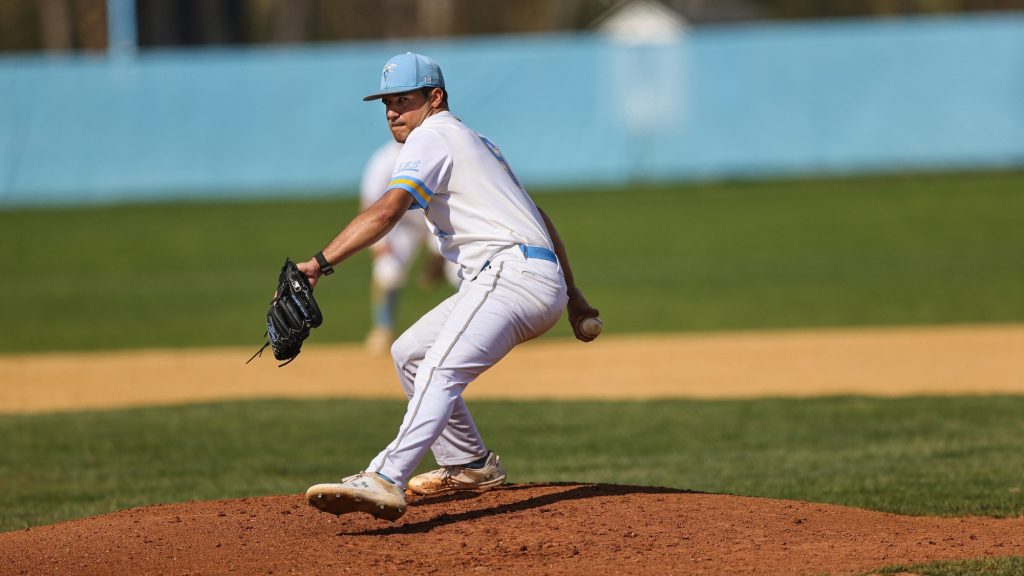
Rules of Baseball
Baseball is an intricate sport with many rules, regulations, and standards. Wondering how many rules are there in baseball? Let’s dive into the rules of baseball!
Pitching and batting rules
In baseball, the pitcher is a defense team member standing on the pitcher’s mound, located at the center of the infield. The pitcher is involved in every play and greatly impacts whether a team wins or loses.
The pitchers are the first defense line that prevents the batters from reaching base. The more batters get out at the home plate, the fewer baserunners there are, and the opposing team has less opportunity to score.
Responsibilities of the pitcher
The player in this position throws the ball to the player in the position of a catcher, who is positioned behind the home plate. The pitcher aims to throw complex, strategic pitches, which can result in strikes or a batter making an out.
Types of pitchers and pitches in baseball
Each baseball team has several pitchers on their roster. They are brought at different times during the game, varying in skill. The types of pitchers in baseball include:
- Starters – the primary pitchers in the game, pitching the majority of the game
- Relievers – enter the game when the starting pitcher has been removed
- Set up pitchers – typically pitch right before the closer
- Lefty specialists – throw left-handed and pitch to left-handed batters
- Closers – designated to getting the final outs in close games
There are nine major pitch types, and understanding them is crucial for both the pitcher and the batter. They include a four-seam fastball, two-seam fastball, cut fastball, slider, curveball, slurve, change-up, split-finger, and knuckleball.
Hitting fundamentals for successful batting
In a baseball game, hitting is considered one of the most challenging skills to master. This is because it requires a proper stance, effective swing mechanics, and strategic thinking. The pitcher uses various methods of throwing each strike, making them tricky to hit. Let’s get into the details.
Proper batting stance
A good batting stance is the foundation for a successful swing. In fact, no matter how strong or quick a player is, they won’t be consistent if they don’t start by taking the proper stance.
Now, if you have been watching a Major League Baseball game, you would probably see players taking different stances. While some players stand tall, others stay lower to the ground. However, most pitchers take the “ready position”.
Elements of a proper batting stance
- Taking a stance in baseball includes standing with your feet shoulder-width apart and parallel to the plate, ensuring balance and stability. The foot is slightly opened towards the pitcher while the back foot is positioned comfortably.
- The player’s knees and hips should be slightly bent for gaining agility and maintaining balance. The player should square their hips and shoulders to the pitcher for better vision and reaction to pitchers.
- The bat should be held with a firm grip without excess tension, and the middle knuckles should be aligned on both hands. In my experience, finding a comfortable grip that enables proper wrist movement is best.
- When taking a batting stance, the player positions their weight between both feet, allowing for weight transfer during the swing.
- The head should be still, and the eyes should be focused on the pitcher to read the pitch effectively. What I find compelling is looking at the inner corner of the ball.
- Some players also lift their legs when hitting to make a powerful move.
Swing mechanics
When the pitcher starts their windup, they shift back slightly, bringing the bat back and getting into a good hitting position. They take a controlled stride toward the pitcher as the ball approaches and transfer the weight to their front foot.
The batter initiates the swing by rotating the hips and turning their back towards the pitcher. They keep their hands close to the body as they swing and make contact with the ball slightly in front of the plate, finishing with a smooth follow-through.
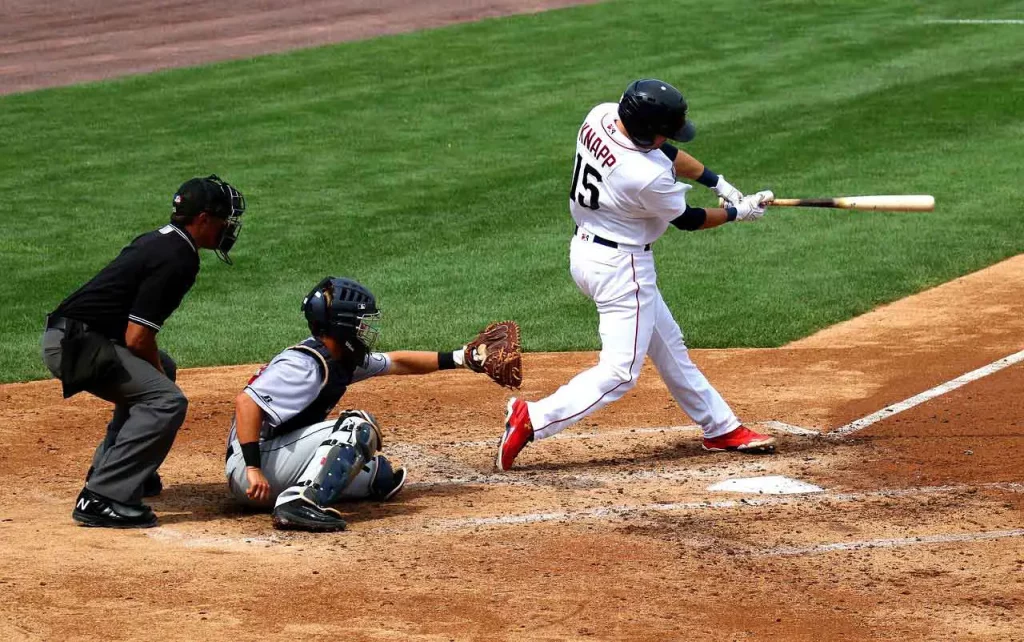
Running the bases and scoring
Base running rules
Baserunners must follow specific rules when advancing or returning to a base. A baserunner is required to advance to the next base when the following batter becomes a runner and occupies the runner’s base. This is known as “force play”.
They can only advance when the fielder touches the batted ball or hits the ground. If the ball is caught in the air, the baserunner must tag the base they are on before they advance.
When the fielder catches a fly ball, the baserunner must “tag up” by returning to their original base before they attempt to advance. They can overrun first base, but if they attempt to advance to second base, they must first retouch first base.
The baserunners must stay within a three-foot wide basepath when they advance from one base to another. They may be called out if they run outside to avoid a tag.
Scoring runs and advancing on hits
A run in a baseball game is scored when a player successfully reaches and touches home plate before being tagged out by the defense team. Runners advance on hits based on the type of hit and their position. Here is how they advance:
- Singles – when the batter hits a single, the runner advances from first base to second base. If there are no runners, the batter then becomes the runner on the first base.
- Doubles – when the batter hits a double, they, along with the runners on the base, advance two bases. The runner on first base scores a run and crosses the home plate, and the batter reaches second base.
- Triples – when the batter hits a triple, they advance three bases together with the runners. The runner on first base scores a run; the same applies to the one on second base, and the batter reaches third base.
- Home runs – when the batter hits the ball over the outfield fence and beyond the fielder’s reach.
Defensive rules and strategies
Fielding positions and responsibilities
In baseball, there are nine fielding positions. Each player has different responsibilities. Let’s take a look at the responsibilities of such baseball players:
- Pitcher – throws the baseball to the batter and attempts to get them out.
- Catcher – catches the pitches thrown by the player in the position of a pitcher.
- The first baseman – covers the first base receiving throws from other fielders.
- Second baseman – covers the second base and is involved in double plays.
- The third baseman – makes plays on ground balls and guards the area near the third base.
- Shortstop – covers the area between the second and third base, handles ground balls, and is involved in double plays.
- Left fielder – catches fly balls hit on their side of the outfield.
- Center fielder – plays in the center field and catches fly balls and ground balls.
- Right fielder – catches fly balls on their side of the outfield.
Umpires and instant replay
Umpires
Umpires play a crucial role in officiating the game and ensuring fair play between the teams. They communicate with each other and ensure accurate calls. They ensure the game’s rules are applied at all times, and their judgments impact the flow and the outcome of the matches.
A professional baseball game usually has four umpires, each with specific responsibilities and authority.
Home plate umpire
Home plate umpire has ultimate authority on the field, stands behind the catcher, and views the strike zone. Their responsibilities include:
- Calling balls and strikes during each bat
- Determining whether the pitch is within the strike zone
- Ensuring the batter follows the rules of the game
- Making calls about whether the batted balls are fair or foul
Base umpires
There are three base umpires in baseball, each with specific coverage areas on the field. The are responsible for the following:
- Making calls on plays at their assigned base
- Assisting the home plate umpire in making fair/foul calls
- Making decisions in case of a dispute
Instant replay
In some cases during the game, the umpires may use an instant replay to help them make accurate calls. Such video reviews are used to ensure fair decisions during crucial points of the game and potentially overturn the on-field calls.
The team’s manager can also request such a review. However, they can challenge a limited number of calls that must be made within a specific timeframe. MLB has included umpires to handle the video review process.
After reviewing it, they convey the decision to the crew on the field. If there is no conclusive evidence to overturn the call made by the umpire, the initial ruling stands. Once the review process is finished, the game continues.
Special rules and situations
Designated hitter rule
The DH rule is implemented in the American League (AL) and other professional and amateur leagues. It allows teams to use a designated hitter to bat in place of the pitcher.
Such players don’t play defense, but only bat, and their position is fixed throughout the entire game. This rule aims to add more defense and increase scoring in the game. It enables teams to use players who excel at hitting.
Extra innings
Extra innings are played when the game is tied at the end of the nine innings. Their purpose is to determine a clear winner of the match. They have the same format as the regular ones, with each team having a chance to bat and play defense.
The visiting team bats first, and the teams continue to make player substitutions. The extra innings have no time limit, meaning the game continues until one team outscores the other one by the end of a complete inning.
In some cases, a runner is placed in the second base at the start of each half-inning. This is to increase the likelihood of scoring.
Tiebreaker rules
The tiebreaker rules in postseason games can depend on the tournament regulations, the league, and the level of play. Some procedures include extra innings, head-to-head records, and run differential.
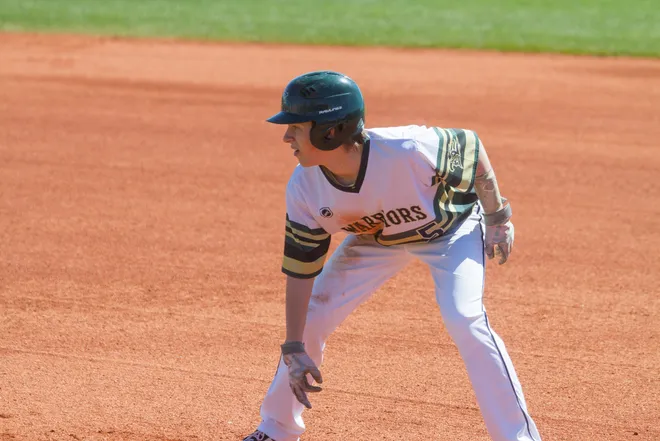
Common Penalties and Violations in Baseball
Balls, strikes, and walks
In baseball, the umpire makes ball and strike calls related to pitches outside the strike zone and base on balls. A balance between strikes and balls is crucial in this sport, and the pitcher’s ability to control their pitches is vital to their performance.
Pitches outside the strike zone
When a pitcher throws a pitch that doesn’t go into the strike zone, it is known as a ball. The umpire then determines whether the pitch is a ball or a strike based on the location when it crosses the front of the home plate. If the pitch is outside the strike zone, the batter’s count increases by one ball.
Base on balls
A base on balls is known as a walk in a baseball game. It is awarded to the batter when they receive four balls (pitches outside the strike zone). After the fourth ball, the batter is awarded the first base.
Any runners on the base advance in one base if it is forced. The walks benefit the offensive team as they allow them to advance baserunners without needing to batter to put the ball in play.
Interference and obstruction in baseball
Interference and obstruction are two distinct rules in baseball that deal with actions that hinder the course of play in the game. Depending on the specific situation, both can result in penalties.
An important thing to mention is that an umpire’s judgment determines whether such a violation occurs. These rules aim to prevent unfair advantages or disadvantages for either team.
Interference
Interference occurs when a player obstructs or impedes a defender’s ability to make a play. There are different types of interference in baseball:
- Catcher’s interference – when the batter or their equipment makes contact with the catcher during the swing, preventing them from making a play on a baserunner that attempts to advance or steal a base.
- Batter’s interference – when the batter hinders the catcher’s attempt to make a play or interferes with the fielder’s ability to field the batted ball.
- Fan interference – when a fan gets onto the field and interferes with the ball or the fielder’s ability to make a play.
- Runner’s interference – when a baserunner intentionally interferes with the ability of the defense player to make a play.
Obstruction
Obstruction in baseball occurs when a fielder hinders the baserunner’s progress. It can happen when a fielder without a ball blocks the baserunner’s path to the base they are trying to reach.
It can also happen when catchers block the home plate without the ball. They are not allowed to do so unless they possess the ball and are trying to make a play. In case of an obstruction, the baserunner gets the next base they were trying to reach when the obstruction occurred.
Violations and ejections
Unsportsmanlike conduct
In baseball, unsportsmanlike conduct is taken seriously to maintain the integrity of the sport. This term refers to any action that violates the principles of fair play. It includes taunting or trying to injure other players and arguing with umpires.
Penalties
The severity of the penalties depends on the conduct the players make. They can come as a warning by the umpire, but some players may also get ejected from the game. Repeated penalties can result in fines and suspensions.
Ejections
If a player uses inappropriate language, disrespects the other player or umpires, or even causes a physical altercation, they can be ejected from the game.
This also applies to coaches and managers who make unsportsmanlike conduct. When one is ejected from the game, they must leave the field.
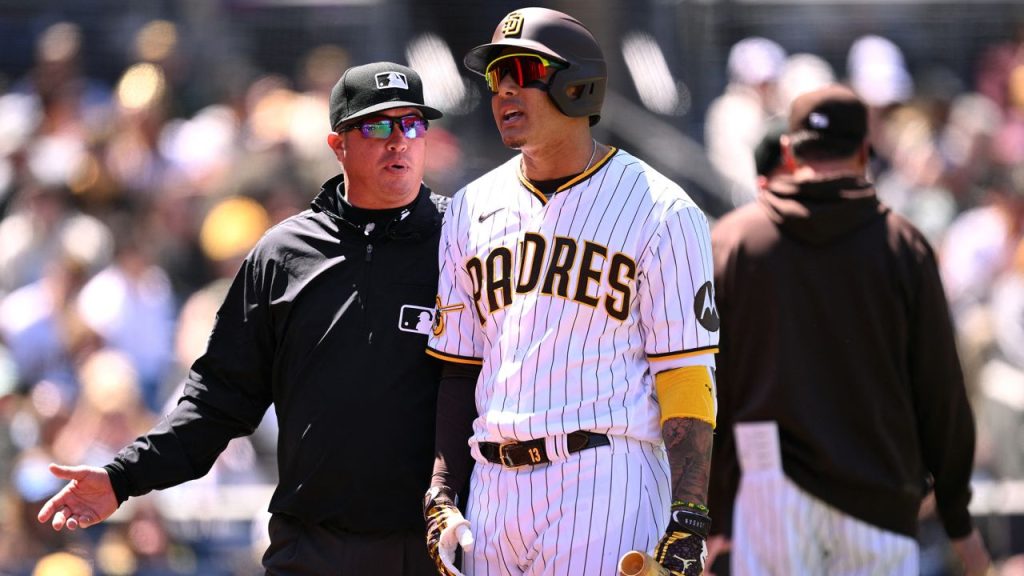
You Might be Interested: History of Baseball
Frequently Asked Questions
What is an infield fly in baseball?
The infield fly is a rule that comes into effect when there are fewer than two outs, and there are runners on first and second base or when the bases are occupied.
If an infielder can catch a fair fly ball with ordinary effort, the umpire declares the batter out even if the ball is dropped or not caught.
This rule prevents the defense from intentionally dropping the ball to initiate a double or triple play. Major League Baseball designed this rule to promote fair play.
How to win in baseball?
In a game of baseball, the team that has scored more runs at the end of nine innings is declared the winner of the game. Winning in baseball requires strong individual and team performance.
Teams must have skilled pitchers who can throw strikes and a solid defense to increase their chances of winning. It also requires timely hitting and smart base running.
The team needs to cooperate and encourage each other, while the coaches must develop effective game strategies. This sport requires physical endurance and mental toughness. The players need to be able to adapt to different game situations.
Can a runner steal a base in baseball?
In baseball, the runners can steal a base. This occurs when the baserunner advances to the next base while the pitcher delivers the ball to home plate.
To be able to do this, the runner needs to take off from their current base and avoid being tagged out by the defense team. Stealing a base is a critical tactic that requires good timing and speed from the player.
Players steal a base to gain better opportunities to score or pressure the defense team. However, it comes with risks; if it is unsuccessful, it can be detrimental to the team. It mainly occurs between the first and the second base.
When is the “mercy rule” applied in baseball?
The “run rule”, popularly known as the “mercy rule”, is applied in baseball to shorten the game when one team is winning by a large amount.
While the conditions may vary on the league and level of play, it generally involves a significant point difference between the teams.
This rule is mainly applied when one of the teams has a lead of 10 or more runs after five innings. The game ends early, and the leading team is declared the winner.
What is a force out in baseball?
A force out in baseball occurs when a player is no longer allowed to occupy the base but must advance to the next one. This can happen when a runner is approaching his current base, and he is put out.
The baserunner is forced to leave the base he has occupied. This is due to the fact that the batter becomes the runner and must occupy the first base. The concept of this rule is based on the idea that two baserunners can’t occupy the base at the same time.
Final Thoughts
The American National Pastime has played an active role in shaping the nation. The sport is played in two teams, each having an objective to score more runs than the opposing team.
Comprehending the rules of baseball and its mechanics is crucial for players to excel on the field. It is essential for coaches to make strategic decisions and guide their teams, as well as for fans to enjoy watching the game.
The sport with a rich history involves strategy and skill, making it a beloved sport for many sports enthusiasts from all over the world.

